

| ▲ Mechanical |
I wanted to see if it was possible to extrude a lump of solder alloy into wire. This was partly a result of playing around with the hydraulic press and trying to find things to do with it! It might have a serious use, though - there are various solder recipes around for fancy jobs like glass and ceramics, and I might want to play with them someday. Having them in wire form would be really useful.
A 6mm hardened steel rod acts as the plunger. The die opening is 1.5mm, with a 2mm relief hole after the opening, to try and reduce friction on the emerging wire. The first photo below shows the rough layout.
To test it, I placed two pieces of 3.25mm lead-free solder in the cavity, inserted the plunger and mounted the whole thing on the bed of the hydraulic press, over a hole in a steel plate so the extruded solder can hang down. It was very stiff to extrude when cold, as might be expected, but when I heated the die to around 200°C with a propane torch, it extruded relatively easily! After a while I felt the plunger stiffen and I unfortunately managed to bend it because I kept applying pressure - I didn't realise that all the solder had actually been extruded.
The surface of the wire is surprisingly smooth, although there is a slight roughness every 2cm or so, corresponding to each stroke of the handle on the hydraulic jack in the press. The diameter is exactly 1.5mm, the same as the die opening. Interestingly, both pieces of solder that were originally placed in the cavity extruded together, as you can see in the last photo where they're peeled apart. In all, I got about 10cm of wire out of this.
Having seen how easy this was to extrude, I think it should be possible to use a larger piston and extrude more volume. A great improvement would be to mount a thermocouple on the die so it could be heated really close to the melting point of the solder, which should soften it considerably.
 |
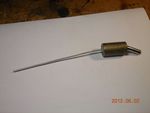 |
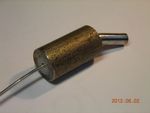 |
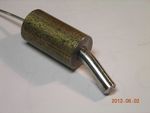 |
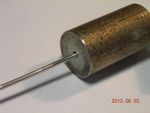 |
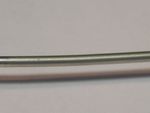 |
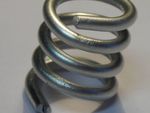 |
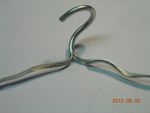 |
| ▲ Mechanical |